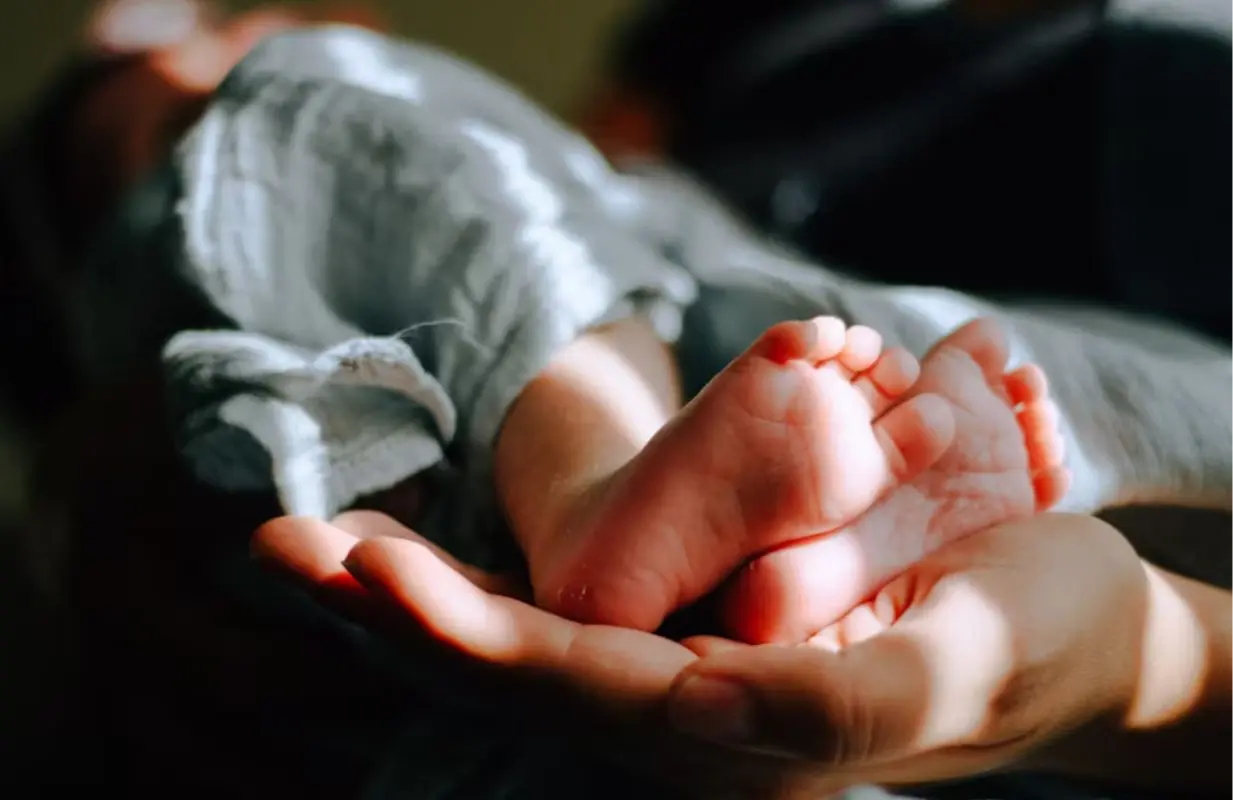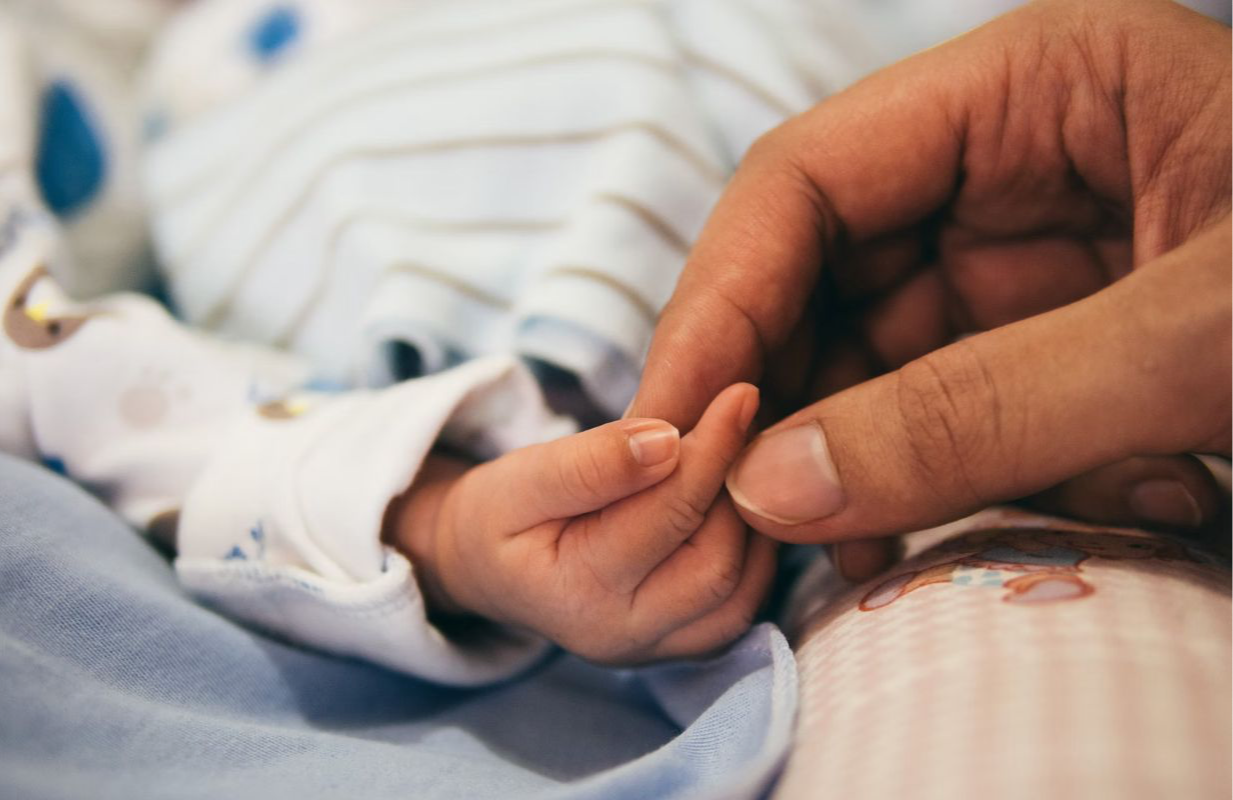World's 'oldest' baby born from embryo frozen 30 years ago
-
 A newborn baby (Image for representation) (Photo by Omar Lopez/ Unsplash)
A newborn baby (Image for representation) (Photo by Omar Lopez/ Unsplash)In a groundbreaking medical event, a baby has been born from an embryo that was frozen 30 years ago. Reportedly, it is believed to be the longest-known duration between embryo freezing and a live birth.
The groundbreaking moment for reproductive science was recorded after the birth of Thaddeus Daniel Pierce in 2025. According to a report by Dexerto, the widely discussed embryo was frozen in 1994.
Linda Archerd donated the embryo 30 years ago. According to The Tribune, she created it following the in vitro fertilization (IVF) procedure. Back then, only one embryo was used to get pregnant with a child, and the other three embryos were frozen for the future.
NEW: An Ohio baby is believed to have broken a record, becoming the "world's oldest baby" after being born from an embryo that was frozen 30 years ago.
— Collin Rugg (@CollinRugg) August 2, 2025
Ohio couple Linda and Tim Pierce's son was born over the weekend, but the embryo was frozen in 1994.
The baby, Thaddeus, was… pic.twitter.com/y79i2drotvWith a wish to experience motherhood again, after many years, she preserved her embryos for a long time and had to spend an annual charge of about $1,000 for their maintenance.
Everything we know about the world's oldest' baby born in 2025
According to a report by MIT Technology Review, Thaddeus Daniel Pierce was born on July 26, after over 30 years of preserving his mother's embryo. In an exclusive conversation with the magazine, Lindsey Pierce, the mother of the miracle baby, shared,
"We had a rough birth but we are both doing well now. He is so chill. We are in awe that we have this precious baby!"
She also spoke about the baby born from the first embryo, further adding,
"The baby has a 30-year-old sister."
Linda Archerd, at the age of 62, reflected on the medical advancement and expressed,
"It’s been pretty surreal. It’s hard to even believe."

Before the medical surprise, Linda went through a struggling phase to conceive. As per the report, she tried to become a mother for six years. However, she could not get pregnant despite putting in all the effort. It was when she and her husband thought of undergoing the in vitro fertilization treatment. In 2025, IVF is just another treatment procedure, but the condition was exactly the opposite three decades ago/ Recalling that time, Archerd shared with the outlet,
"People were [unfamiliar] with it. A lot of people were like, what are you doing?"
Without being affected by external noise, the couple underwent the requisite steps for Archerd's pregnancy, which resulted in the creation of four embryos. Following this moment, Linda conceived her daughter and preserved the remaining three. Discussing her daughter, she conveyed,
"I was so blessed to have a baby."
Archerd has always wanted to be a mother again, but her husband disagreed. Their contrasting opinions and choices about their lives ended in a divorce. After the legal battles, she got custody of the three embryos. Expressing her desire for motherhood, she chimed in,
"I always wanted another baby desperately. I called them my three little hopes."
When Linda Archerd began experiencing menopause, she was forced to confront a long-standing thought regarding the embryos she had frozen decades earlier. Discarding them or donating them for research or anonymous donation did not feel right to her. Explaining her views, she said,
"It’s my DNA; it came from me … and [it’s] my daughter’s sibling."
That desire for connection led her to explore embryo adoption, a unique arrangement where both donor and recipient are involved in the matching process. The approach, typically guided by religious organizations, aligned with Archerd's beliefs. But finding an agency willing to accept embryos frozen for over 30 years proved challenging. Older embryos are often seen as riskier due to outdated freezing techniques. Still, Archerd remained committed to giving them a future and continued finding the best solution.
World's oldest baby, 30 years old, was born less than a week ago, in Ohio.
— Staying Sane (@stayingsaneusa) July 31, 2025
It is not a crazy talk. He was created from an embryo frozen in 1994 and 'adopted' 30 years later.
His name is Thaddeus Daniel Pierce, and his parents are Lindsey, 35, and Tim Pierce, 34. He is less than… pic.twitter.com/dSrvzQdGKREventually, Archerd discovered the Snowflakes Embryo Adoption Program, operated by Nightlight Christian Adoptions. Her embryos were placed under the Open Hearts program, an initiative specifically designed for embryos considered "hard to place." Lindsey and Tim Pierce, a couple in their 30s, enrolled in the Open Hearts program after spending seven years navigating infertility.
Over time, the medical procedures of Lindsey getting pregnant with one of the frozen embryos continued with her welcoming a baby boy a couple of weeks ago. The embryo had remained in cryogenic storage for over 30 years before being thawed and implanted. Since the news broke on the internet, this historic birth has sparked renewed discussions about long-term embryo storage, delayed implantation, and more.
TOPICS: Embryo, oldest baby